
This is the ink drawing on plaster.

|
|
 Temple Mayor Museum AD 1400 This is the ink drawing on plaster.  This sculpture, 10 feet in diameter, is one of the most impressive and important examples of Aztec art. Her name is Coyolxauhqui, which means "She of the Rattles on her Cheeks". She was a daughter of Coatlicue and the ruler of the Centzon Huitznahuas, the star gods. She was a powerful magician and led her siblings in an attack on their mother, Coatlicue, because she became pregnant in a shameful way (by a ball of feathers). Coatlicue's fetus, Huitzilopochtli, sprang from her womb in full war armour and killed Coyolxauhqui, along with many of the brothers and sisters. He cut off her limbs, then tossed her head into the sky where it became the moon, so that his mother would be comforted in seeing her daughter in the sky every night. She was one of the major goddesses in Aztec mythology. In a mythical representation of the triumph of the sun over the powers of night personified by Coyolxauhqui as a lunar goddess, she is shown decapitated and dismembered after she was slain by her brother, the Sun God, Huitzilopochtli. Here, bells decorate her cheek, and she wears a skull on her belt.
0 Comments
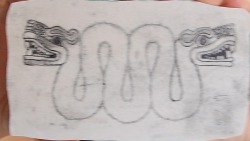 Pictured here is a cast stone sculpture of a Maya Double Headed Serpent. The dimensions are 4" wide x 3" tall and it weighs about 1 pound. British Museum, London. 15th century Splendid relic of the Aztecs, who rose from squalid origins to power and riches in just 200 years, this double-headed rattlesnake serpent was used as a ceremonial chest ornament that may have been worn by a priest. It is encrusted with scales of turquoise, a stone the Aztecs imported from the outposts of their empire to adorn some of their most beautiful possessions. This piece is the work of a Mixtec jeweler, and dates from the 15th century. 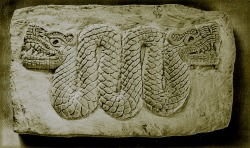 Finished plaster carving 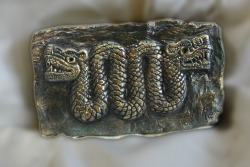 Once cured, I processed this sculpture with black pigments and Moss Green dye and gave it "Glorious Gold" highlights. A metal hook is embedded in the back, and it can be hung indoors or out. The mineral oxide pigments are 100% permanent and lightfast. The piece is further protected by a UV barrier coating. Signed and numbered in wet concrete on back. 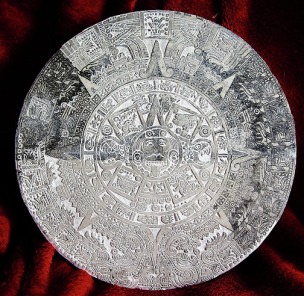 Perhaps it was the shape and geometry of the sunfaces that led someone to suggest that I try an Aztec Calendar. A description straight from Wikipedia: "The Aztec Calendar is the calendar system that was used by the Aztecs as well as other Pre-Columbian peoples of central Mexico. It is one of the Mesoamerican calendars, sharing the basic structure of calendars from throughout ancient Mesoamerica. The calendar consisted of a 365-day calendar cycle called xiuhpohualli (year count) and a 260-day ritual cycle called tonalpohualli (day count). These two cycles together formed a 52-year "century," sometimes called the "calendar round." The xiuhpohualli is considered to be the agricultural calendar, since it is based on the sun, and the tonalpohualli is considered to be the sacred calendar." Photo is sometime during day 3 of carving. 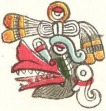 A few images from the middle ring of "day signs". There are twenty of them. This one is Ehecatl (wind) 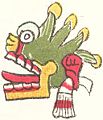 And Malinalli, or grass. 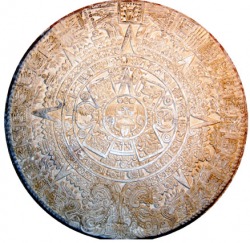 Finished plaster model 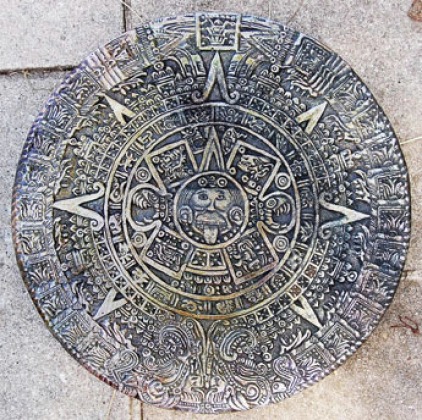 A casting (in concrete, as usual). Finish: Silverblue |
Archives
October 2018
Categories
All
|